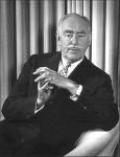Emancipation Proclamation
As Gen. Granger read the announcement that slavery had ended, the celebration began. The date would go down in history — June nineteenth, soon shortened to Juneteenth.
GALVESTON, TEXAS, June 19, 1865 — A balding, brush-bearded officer in Union blue steps onto the balcony of the finest villa in this coastal town. On the plaza below, hundreds of Texans, black and white, wonder what this is all about. Major General Gordon Granger holds out a parch
The Emancipation Proclamation opened the door for Pennsylvania's African-American soldiers
The scene was wild and grand.
The prairie lawyer president and outspoken abolitionist formed an unusual friendship
The prairie lawyer president and outspoken abolitionist formed an unusual friendship
The Vigil That Put an End to Slavery
The crowded, torchlit, tension-filled scene above hangs today in the White House room in which Abraham Lincoln affixed his signature to the Emancipation Proclamation—using a gold nib and writing carefully so that no one, seeing a hesitant line, could ever say
Without doubt they were Washington, who walked carefully within the Constitution, and Lincoln, who stretched it as far as he dared





